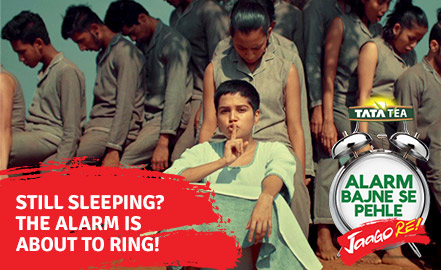Why this Indian village accepts live-in relationships
Naniya Garasia, aged 70, from Rajasthan married his 60-year-old live-in partner Kaali in the presence of his grandchildren. His three sons also married their live-in partners on the very same day.
All the four men had been living with their partners for years and their children had all been born out of wedlock, something that India may find hard to come terms with.

Living-in a tradition for 1000s of years in this part of India
Living-in couples in urban cities have been frowned upon severely. Many have also been victims of moral policing, which sometimes take extreme turns.
Many debates on living-in vs. arranged marriage have flared up of late in our country.
"Indian culture does not allow a man and a woman to live together out of wedlock" – that is the supposed notion
Meet the tribe from Rajasthan that has defied this stringent tradition – and how.
The indigenous Garasia tribe from Rajasthan has been practicing a different tradition from thousands of years. According to social scientists who have been studying the tribal practices, the Garasia people’s livelihood depends on farming and labour. Couples live-in together and only marry their partners when they have a fair amount of money.
Yet money happens to come at a much later point in their lives. Until then, they continue to live together and have children out of wedlock, minus the societal ostracisation.
Choose your partner and then 'elope'
Another unusual practice in the Garasia community is letting their teenaged children befriend partners of their choice at a two-day 'courtship fair' held in parts of Rajasthan and Gujarat. Reportedly, they then "elope" and return to live together, without necessarily having to marrying each other.
Rare incidents of dowry death and rapes
Experts have pointed to the low incidents of dowry deaths and rapes in the community. Without the concept of marriage, there’s no question of dowry deaths. This is a matrilineal tribe where women have an equal status, or even a higher status.
It is also a bit of a rare occurrence in rural India, where teenaged boys and girls have the freedom to choose her partner.
And when the "eloped" couple does return, it is the boy’s family in this case that pays a sum to the bride’s family before the couple start living-in together.

Why is the culture different among Garasias?
Social scientists such as Rajiv Gupta who has studied the tribe says their culture believes in the "the right to choose and the right to reject".
"They do not find the modern society’s marriage system worthy, as it brings with it several impositions, especially on women," says Gupta.
The Garasia community finally giving in to 'modern' ways
One of the spokesperson in the village mentioned that this practice is now changing. Verbal agreements between the couples are being recorded on paper. However, it’s a slow and gradual change.
What, really, is 'Indian culture'?
Our country has often prided on our "culture and traditions".
Does the culture of the Garasia tribe, which incidentally has a low rate of rape and dowry, has something to teach our country currently suffering beyond words from repeated and ghastly crimes against women?
What are your thoughts? Do share them in the comment box.
* Source – Al Jazeera
Share this story on





